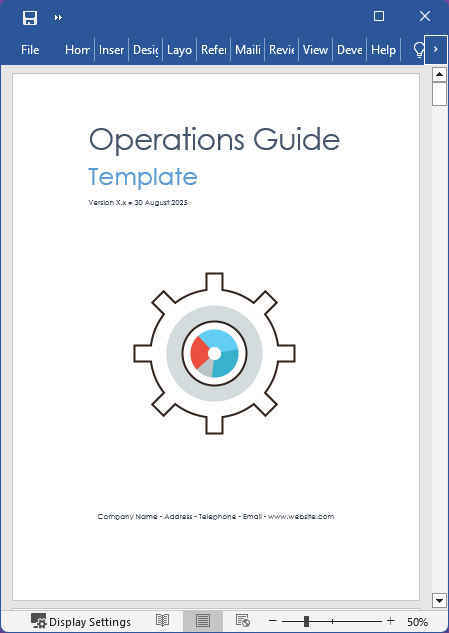AI Writing, Operations Guide
Why We Created the Operations Guide AI Prompt Library
Why We Created the Operations Guide AI System
Take Operations Manuals, for instance. Even if you’re a total rookie, operations documentation shouldn’t take weeks to write. Yet it’s not unusual for many Operations Managers and Tech Writers to spend 20+ hours (or more?) creating guides that often miss critical details.
To address this, I worked with the team here at Klariti to build an Operations Guide AI System.
The AI Skeptic’s Journey
Like I said, I resisted AI tools for quite a while. The outputs felt generic. The writing lacked the nuance that professional level documentation requires. Most AI-generated content feels generic. It read like it was produced by someone who had never worked in operations. Which is obvious, of course.
That changed when I started experimenting with specific, detailed prompts.
Instead of asking AI to “write an operations guide,” I began crafting prompts that included business context, industry requirements, compliance, auditing and operational realities.
The results were so-so at first, but then got better.
Why?
AI identifies blind spots I often haven’t considered. It helps me articulate complex processes more clearly. Most importantly, it added professional nuance that elevated the final documentation.
The Hybrid Approach
The solution we came up with isn’t AI alone.
It combines our experience with its AI-powered personalization. Here’s what I mean.
The 77 AI prompts handle the personalization. Each prompt is designed to generate content specific to your system, your organization, and your industry. No more generic templates that require hours of customization.
Beyond the Word Template
The Excel worksheets solve another problem entirely. Operations teams need tracking tools, not just documentation.
Our package includes eight essential worksheets:
- Daily task management
- Hardware and desktop inventory tracking
- Error code cataloging
- Inspection reporting
- Responsibility matrices
These aren’t afterthoughts. They’re the operational tools that turn documentation into daily practice.
Three Levels of Sophistication
Not every organization needs enterprise-level analysis. A startup’s operations guide differs from a Fortune 500 company’s requirements.
That’s why we created three prompt levels:
- Basic prompts generate essential operational documentation. Use these for straightforward internal procedures.
- Advanced prompts add strategic business context. These connect operational details to business outcomes and performance metrics.
- Complex prompts provide enterprise-level analysis. They include competitive insights, risk assessments, and strategic recommendations suitable for board-level review.
This allows you to choose the complexity that matches your audience and organizational needs.
Real Results in Real Time
This combination works. Customers can complete end-to-end operations guides in 4-6 hours instead of multiple weeks. AND the quality exceeds what they previously created manually.
The prompts also reveal operational blind spots.
They help teams think through scenarios they might have missed.
The Template Foundation Matters
AI needs precise inputs to produce quality results.
Generic prompts create generic output.
But when AI works within a proven framework, it becomes a powerful personalization tool.
The Operations Guide template has been refined through multiple customer implementations. It covers the sections operations teams actually need.
You can then use the prompts to tailor the documentation for your specific environment.
Moving Forward
For me, this hybrid approach is the future. It’s counterproductive to work by yourself when you have such incredible resources on-tap in AI.
Get your copy of the templates and experiment with the prompts. Curious to know how you get on.

